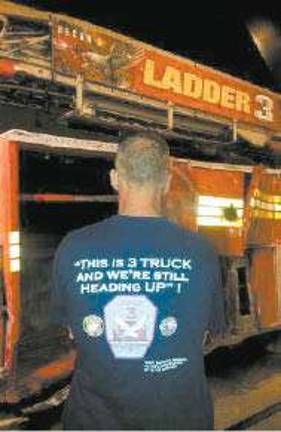Helping to Ease The Emotional Pain at 9/11 Museum

The museum has tried to address the substantial emotional impact its exhibits will have on visitors
Downtown There are prominent videos of the twin towers collapsing and photos of people falling from them. Portraits of nearly 3,000 victims and voice mail messages from people in hijacked planes.
But behind the wrenching sights and sounds of the National Sept. 11 Memorial Museum in Manhattan lies a quiet effort to help visitors handle its potentially traumatic impact, from silent spaces and built-in tissue boxes to a layout designed to let people bypass the most intense exhibits.
Discreet oak-leaf symbols denote items connected to the dead, and the images of falling victims are in an alcove marked with a warning sign. Designers made sure rooms have ample exits, lest people feel claustrophobic in the underground space. And American Red Cross counseling volunteers were standing by as the museum opened to the public Wednesday.
"There's a lot of thought given to the psychological safety of visitors," said Jake Barton, who helped create the exhibits.
It didn't seem like enough to Lori Strelecki, who was among the first people to tour the museum Wednesday. She said she had seen a visitor crumpled over, crying.
"Is that something you want to evoke?" asked Strelecki, who runs a historic house museum in Pennsylvania. "It's too much."
Steven Cennamo, a dentist, was impressed by the museum's blend of spaciousness and artifacts as intimate as a victim's wallet. Given the singularity of 9/11, "I don't think you can overdo it," he said.
More than 42,000 9/11 survivors, victims' relatives, first responders and recovery workers had visited during the past six days, when it was open only to them, according to Executive Director Joe Daniels.
It's the latest in a series of memorials-as-museums that seek to honor the dead while presenting a full, fair history of the event that killed them. And the Sept. 11 museum strives to do that at ground zero while the attacks are still raw memories for many. Museum planners realized early on the challenge of trying not to shatter people "while at the same time being true to the authenticity of the event," said Tom Hennes, founder of exhibit designer Thinc Design.
To allow visitors an emotional breather, silent spaces with few artifacts surround the densely packed historical exhibit that follows the timeline of 9/11, set off by a revolving door. Elsewhere, a room where visitors can call up recorded recollections about individual victims was designed as a quiet sanctum for feelings, with tissue dispensers embedded in the benches, Hennes said.
The historical exhibit, crafted by another firm, Layman Design, envelops visitors in images, information, objects and sounds, but designers sought to avoid emotional overload.
Beyond content choices, the Sept. 11 museum hopes a human touch can help visitors grapple with their reactions. Retired social worker Georgine Gorra helped people find their way around the museum after Thursday's dedication ceremony. They didn't seem traumatized, she said, just tearful.
"We all were, frankly."